The 1970s was a transformative era in fashion and hairstyling, marked by bold and iconic trends.
One of the most distinctive aspects of this era was the rise of disco hairstyles. Disco hair defined a generation and became a symbol of self-expression and liberation.
In this comprehensive guide, we’ll explore the diverse and glamorous world of 70s disco hairstyles, drawing inspiration from the captivating styles that graced the dance floors of that era.
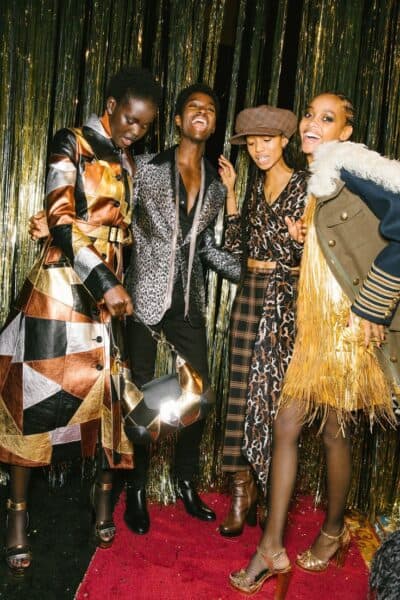
Credits: @voguemagazine / Pinterest
Key Takeaway
- Understanding and embracing your natural hair texture was key to achieving authentic 70s disco hairstyles. Volume and bigger styles were desirable, with the mantra “the bigger the better.”
- Iconic voluminous disco styles included disco curls, Farrah Fawcett feathered hair, bouffant dos, and shags.
- Mastering the curling iron to create an array of curl sizes and experimenting with heat tools led to dimensional, dynamic disco locks. Enhancing natural curls was also on trend.
- Recreating legendary 70s hairstyles allowed people to celebrate stars’ trademark styles.
Embracing Your Natural Texture & Hair Type

Credits: @fatimagul417 / Pinterest
Understand Your Hair Type
In the world of 70s disco hairstyles, it’s crucial to understand your hair type to rock those iconic looks authentically. Whether your hair is curly, straight, long, or in-between, each type has its own charm, requiring specific styling approaches for that disco vibe.
Tailoring your routine to your hair’s natural tendencies ensures a harmonious outcome. For straight hair, focus on adding volume; for wavy hair, enhance it with loose curls; and for coily hair, let it shine naturally.
This not only makes styling more effective but also celebrates the authentic beauty of your hair.
Exploring your hair type is like embracing the diversity of the 70s. It’s about celebrating your hair’s natural beauty, recognizing its strengths, and learning how to enhance its unique characteristics.
Enhance Your Natural Texture
As we delve deeper into the disco-inspired world, one cannot overlook the enchantment that natural texture brings to 70s hairstyles. Embracing your hair’s natural texture is not just a styling choice; it’s a celebration of authenticity.
Exploring various methods that enhance and showcase the natural texture of your hair will elevate your natural beauty and transport you back to the disco era,
How to Achieve Volume and Texture
Achieving volume and texture becomes a pivotal aspect of capturing the iconic spirit of the era.
The disco dance floors were spaces for movement and stages for voluminous hair that spoke volumes.
The Bigger, The Better
In the disco era, the mantra for hair was clear: the bigger, the better. Voluminous hair became a symbol of rebellion, self-expression, and a carefree spirit and echoed the dynamic and vibrant energy of the 70s. Achieving this iconic look involved more than just styling; it became a cultural phenomenon.
Big hair in the 70s went beyond being a mere fashion statement; it was a rebellion against societal norms. The larger-than-life hairstyles symbolized breaking free from conventions, encouraging individuals to express themselves boldly and without restraint.
Voluminous hair was also synonymous with confidence and empowerment. Individuals embraced their natural texture and amplified it to make a statement, contributing to a cultural shift celebrating uniqueness and individuality.
Embrace Voluminous Styles
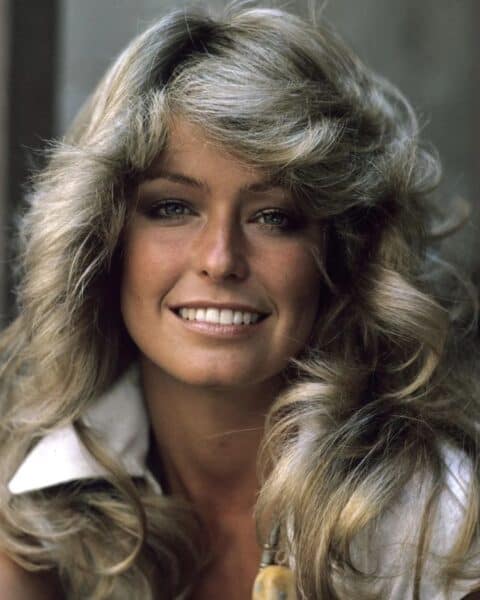
Credits: @townsendangels / Instagram
The disco era boasted a myriad of voluminous hairstyles that became synonymous with the groovy and dynamic spirit of the time. Here are some iconic voluminous styles popular during the 70s and how you can master them for a truly groovy look.
- Disco Curls: Disco curls were a staple on the dance floor, characterized by their bouncy and voluminous nature. Achieve disco curls by using a curling iron or hot rollers. For added volume, tease the roots slightly and set them with a firm-hold hairspray.
- Farrah Fawcett Feathered Hair: Farrah Fawcett’s feathered waves were a sensation, combining volume with a touch of sophistication. Create feathered waves by using a round brush and a blow dryer. Lightly curl the ends away from the face for that signature Farrah Fawcett bounce.
- Bouffant Styles: The bouffant was all about achieving height and volume, creating a glamorous and elegant appearance. Backcomb the crown of your hair to add height and smooth the surface for a polished bouffant. Secure with bobby pins or hairpins.
The Shag: Effortless Volume Spotlight
One of the most beloved hairstyles of the 70s, the shag, was a masterpiece in creating effortless volume. This carefree and tousled style captured the spirit of the era, and achieving it was a blend of technique and attitude. The shag’s layers and texture naturally created volume without the need for excessive styling.
Tips for Achieving Effortless Volume in the Shag
- Layered Cut: Opt for a layered haircut that enhances your hair’s natural movement and volume.
- Texturizing Products: Use texturizing products to define and separate the layers, adding a touch of the shag’s characteristic texture.
- Lightweight Styling: Keep styling light and tousled to maintain the shag’s relaxed and carefree vibe
Haircut Styles of the 70s
1. Choppy Layers: Adding Depth to Disco
In the vibrant landscape of 70s disco hairstyles, one standout trend that defined the era was the widespread adoption of choppy layers.
This distinctive style wasn’t merely a fashion statement; it became synonymous with the dynamic and free-spirited essence of the disco era.
This style added texture, volume, and movement, turning every head into a cascade of playful, carefree vibes.
The impact was on the hair and the entire persona, aligning perfectly with the energetic and expressive disco culture.
2. Short Hair Revolution: Liberating 70s Styles
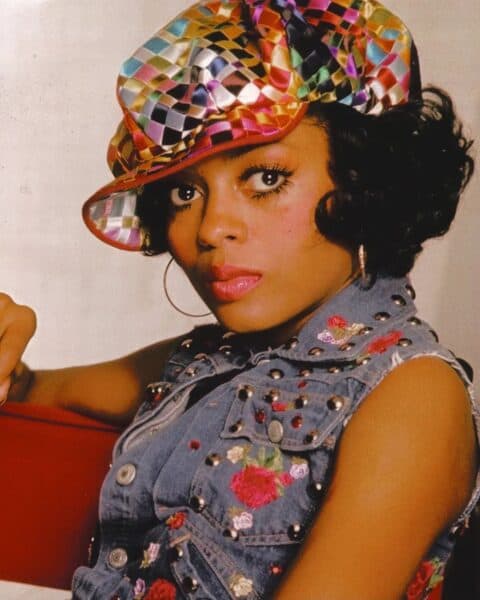
Credits: @lostinhistorysomewhere / Instagram
The 70s witnessed a revolutionary shift in hairstyling, marked by the cultural significance of short haircuts. These bold and liberating styles symbolized rebellion, challenging traditional beauty norms and empowering individuals to express themselves freely.
Short haircuts during the 70s held profound cultural significance. They were not merely hairstyles; they represented a rebellion against societal expectations.
As individuals embraced shorter lengths, they made a statement that rejected conventional norms and celebrated the freedom to express personal identity through hair.
Short haircuts, including a pixie cut and choppy bob, epitomized the bold fashion choices of the era.
From sleek sophistication to edgy rebellion, individuals could transform their looks effortlessly, adapting their hairstyles to different occasions and moods.
3. Shag Haircut: A Timeless Journey
The shag haircut embarked on a fascinating journey during the 1960s, tracing its roots from rock ‘n’ roll from the 1950s.
Evolving seamlessly into the disco era of the 70s, the shag transformed into an iconic hairstyle, symbolizing effortless coolness and casual glamour on the dance floor.
Here’s a quick guide on how to rock the look:
- Texture is Key: Embrace the textured layers that define the shag. Use texturizing products to enhance the natural movement and body of your hair.
- Effortless Waves: Achieve loose, beachy waves with a curling iron or by braiding your hair overnight. The shag cut is complemented by tousled, carefree waves.
- Minimal Products: Keep styling products minimal to maintain an effortless vibe. A touch of texturizing spray or mousse can go a long way.
- Regular Trims: The shag looks best when well-maintained. Regular trims are essential to prevent the layers from becoming too heavy or losing shape.
Variations for different face shapes:
- Round Faces: Opt for longer layers around the face to elongate and slim the appearance.
- Square Faces: Soften angular features with wispy, layered bangs and textured ends.
- Oval Faces: Almost any variation suits oval faces, but consider a mid-length shag for a balanced look.
- Heart-Shaped Faces: Balance a pointed chin with layers starting below the chin and framing the face.
4. Styling Fine Hair: Disco Magic for Every Texture
Individuals with fine hair faced unique challenges in pursuing 70s disco hairstyles.
The primary concern revolves around maintaining volume and preventing styles from falling flat.
Fine hair tends to lack natural density, making it more susceptible to gravity’s pull and causing hairstyles to lose shape and bounce. Additionally, heavy products can easily weigh fine hair, making it crucial to balance achieving volume and avoiding a flat appearance.
Addressing volume and flatness head-on is essential to combat the challenges of fine hair. To do this:
- Begin by selecting lightweight, volumizing hair products that add body without weighing down the hair.
- Avoid heavy, oil-based products that lead to a limp and lifeless look.
- Layering is key; opt for hairstyles with textured layers that create the illusion of thickness and movement.
Styling Tips for 70s Disco-Inspired Hair
1. Mastering the Curling Iron
The curling iron was crucial for achieving genuine 70s disco curls. Its versatility allowed for the creation of different curl sizes, contributing to that era’s dynamic and lively hairstyles.
To get the perfect disco curls, play with various barrel sizes to craft anything from tight ringlets to loose waves, giving your hair dimension and movement.
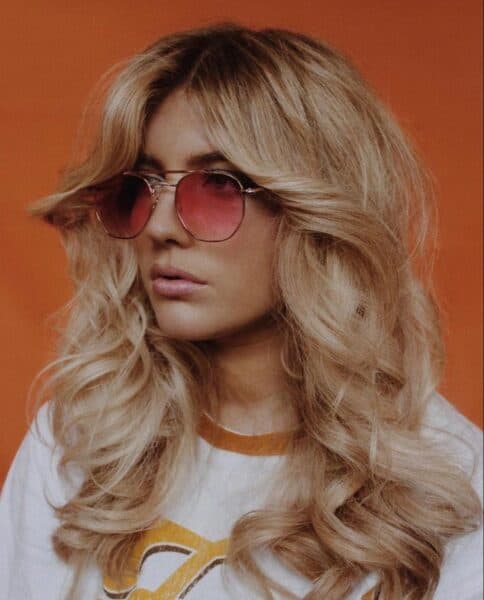
Credits: @LaurenLangston27 / Pinterest
Step-by-Step Guide
Here is a breakdown of a step-by-step guide to ensure you hit the dance floor confidently.
- Preparation: Begin with clean, dry hair for optimal results. Apply a heat protectant to shield your locks.
- Sectioning: Divide your hair into manageable sections. Smaller sections create tighter curls, while larger sections result in looser waves.
- Temperature Settings: Adjust the curling iron temperature based on your hair type. Lower temperatures work for fine hair, while thicker locks may require higher heat.
- Curling Technique: Start from the bottom, wrapping hair around the iron away from your face. Hold for a few seconds, release, and let the curls cool.
- Repeat: Continue this process section by section until your entire mane is a cascade of disco curls.
Addressing Common Challenges
Even disco queens face challenges. Here’s how to overcome them for flawless results:
- Inconsistent Curls: Ensure uniform section sizes for consistent curls.
- Stubborn Hair: Opt for a higher temperature, but use it sparingly to avoid damage.
- Curls Not Lasting: Secure each curl with a clip to set the shape while it cools.
2. Embrace Your Natural Curls
For those blessed with natural curls, the 70s disco era celebrates your unique texture. Your natural curls are a gift, and it’s time to celebrate them as an integral part of your individuality. Disco curls come in all shapes and sizes, so let your natural beauty shine.
Styling Tips for Natural Curls
Enhance the beauty of your curls with these tailored tips:
- Tools and Products: Invest in a wide-tooth comb, a leave-in conditioner, and a frizz-control serum.
- Defining Curls: Scrunch your curls with a styling product to enhance their definition.
- Combatting Frizz: Apply a small amount of serum to tame frizz without compromising volume.
- Maintaining Vibrancy: Regular trims and deep conditioning keep your curls healthy and vibrant.
3. Add a Modern Twist to Classic Styles
While 70s disco hairstyles are timeless, adding a modern twist can give them a fresh, contemporary appeal. To bring these classic styles to life, it’s essential to understand how to incorporate modern elements. By blending retro charm with contemporary touches, you can create hairstyles that transcend time and make a statement that aligns with today’s trends.
To bring disco styles into the modern era, consider the following:
- Update Silhouettes: Maintain the essence of classic cuts while adjusting lengths for a contemporary feel.
- Play with Color: Experiment with modern techniques to add dimension and vibrancy.
- Texture and Layers: Incorporate trends like textured layers for a chic, updated look.
- Accessorize: Strategically use accessories such as hairpins, scarves, or headbands to elevate your entire ensemble. Explore how these elements can elevate your look, whether a glittering hairpin or a chic scarf.
Tips on Balancing Retro and Modern Elements
Achieving a harmonious fusion of retro and modern elements is an art. Here are some tips to strike the right balance:
- Subtle Accents: Opt for accessories that complement your hairstyle rather than overpower it. Choose pieces that enhance the overall look without stealing the spotlight.
- Matching Styles: Ensure that the chosen accessory aligns with your desired vibe for a casual day out or a glamorous evening event. Let the accessory harmonize with the occasion.
- Experimenting: Don’t be afraid to experiment. Mix and match accessories to find what resonates with your unique style.
4. Curtain Bangs for a Retro Touch
Curtain bangs are coming back, and their retro touch perfectly complements 70s-inspired looks. To achieve that perfect retro vibe with curtain bangs, consider the following techniques:
- Soft Parting Technique: The hallmark of curtain bangs is a soft, center parting. Gain insights into achieving this effortlessly, allowing your bangs to elegantly frame your face.
- Face Framing: Understand how curtain bangs can beautifully frame your face, adding a touch of sophistication to your overall appearance.
- Styling Suggestions: Explore styling suggestions that showcase the versatility of curtain bangs. Whether you opt for loose curls or a sleek, straight look, discover how these bangs can seamlessly integrate into various hairstyles.
- Styling Suggestions: Explore styling suggestions for curtain bangs that seamlessly integrate into various hairstyles, whether you’re opting for loose curls or a sleek, straight look.
Incorporating curtain bangs into your 70s-inspired hairstyle is an art. Learn the nuances, experiment with styles, and enjoy the retro touch they bring to your overall look.
Creating Iconic Looks
Bob Marley’s Reggae Vibes

Credits: @bob_marley_dailys / Instagram
The 1970s marked a period of cultural and musical revolution, and Bob Marley was one iconic figure who left an indelible mark on the era. Known for his reggae-inspired music, Marley’s hairstyles were just as influential.
His signature dreadlocks became a symbol of his cultural pride and musical rebellion.
To achieve Bob Marley’s distinctive look, embrace your hair’s natural texture and let it grow long. Regularly twisting and maintaining dreadlocks will help you achieve an authentic reggae vibe.
Use natural products to nourish and style your hair, echoing Marley’s connection to nature.
John Travolta’s Layered, Feathered Look
The dance floors of the 70s were graced by the presence of John Travolta, who brought the disco craze to life with his roles in films like Saturday Night Fever. Learning classic 70s dance moves can add an authentic touch to your roller skating outfit, ensuring you stand out at any themed event..
Travolta’s hairstyle, characterized by layered and feathered locks, became an iconic symbol of the era.
To replicate John Travolta’s timeless and glamorous look, consider opting for a layered haircut with feathered edges. The key is to create soft, flowing layers that frame the face.
Regularly using styling products such as mousse and hairspray will help you achieve the perfect feathered effect.
Basketball Legend Julius Erving’s Afro Hairstyle
Julius Erving, known as “Dr. J,” was a basketball legend and a trendsetter in the world of fashion and hairstyles.
His iconic afro hairstyle became a symbol of empowerment and cultural identity during the 70s.
To embrace the afro look, let your hair grow into a rounded shape and maintain its natural texture. Regularly moisturize your hair to keep it healthy and voluminous, celebrating the cultural significance of the Afro hairstyle.
The Afro is not just a hairstyle; it’s a celebration of identity and heritage.
Jane Birkin’s Signature Style
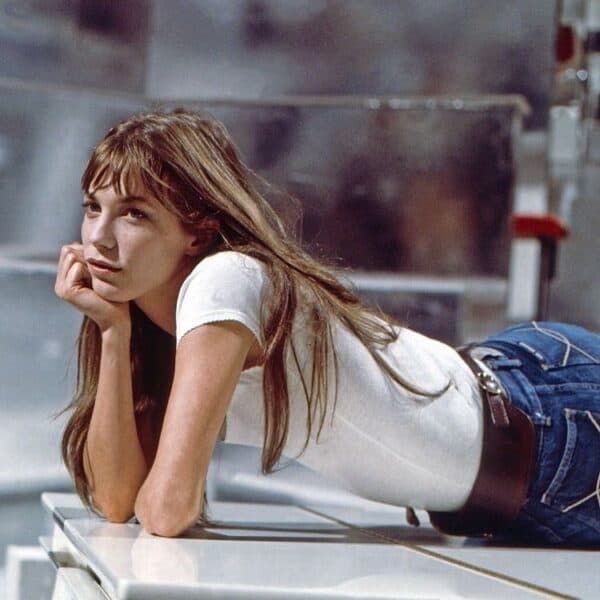
Credits: @janebirkindaily / Instagram
Jane Birkin, a style icon of the 70s, left an indelible mark on the era’s hairstyle scene. Her signature look, characterized by effortless bangs and loose, flowing waves, embodied the carefree spirit of the time.
To achieve Jane Birkin’s style, opt for a layered haircut with bangs and a curling iron to create loose waves. Keep the look relaxed and natural, capturing the essence of Birkin’s effortless chic.
Disco Diva: Donna Summer
Donna Summer, the undisputed queen of disco, not only ruled the charts but also set trends with her glamorous hairstyles. From voluminous curls to sleek updos, Donna Summer’s hair was as captivating as her voice.
To recreate her disco diva look, experiment with voluminous curls and consider adding extensions for extra length and drama.
Emulating Diana Ross
Diana Ross, both a musical and style icon, showcased a range of captivating hairstyles throughout the 70s. From glamorous afros to elegant updos, Ross’s looks were as diverse as her talent.
To achieve her legendary style, experiment with different wigs, weaves, or styling techniques to embrace the versatility of Ross’s iconic hair journey.
Joni Mitchell’s Bohemian Vibe
Joni Mitchell brought a bohemian touch to the 70s with her unique hairstyles. Her free-spirited and unconventional looks reflected the artistic and expressive nature of the era.
Experiment with loose waves, braids, and headbands to channel Joni Mitchell’s bohemian vibe. Embrace a carefree and natural aesthetic, celebrating individuality and creativity.
Jane Fonda’s Iconic Hair Journey
Jane Fonda’s transformative and fashionable hairstyles in the 70s mirrored her evolution as a style icon. From sleek and sophisticated to bold and edgy, Fonda’s hair journey captured the dynamic spirit of the decade.
Consider experimenting with different cuts, colors, and styles to trace her iconic path. Whether it’s a classic bob or a shaggy layered look, Fonda’s influence remains a timeless source of inspiration.
Olivia Newton-John’s Iconic Style
Olivia Newton-John, known for her role in “Grease,” played a significant role in shaping the 70s hair trend. Her iconic hairstyle ranged from the innocent girl-next-door look to the glamorous Sandy transformation.
To celebrate Newton-John’s versatile looks, experiment with various hairstyles, from soft curls to sleek ponytails. Embrace the duality of innocence and glamour that defined Newton-John’s iconic style.
Stevie Nicks’ Boho Chic

Credits: @60swonderland / Instagram
Stevie Nicks, the enchanting voice of Fleetwood Mac, brought a boho-chic flair to the 70s. Her ethereal and unique hairstyles became synonymous with her mystical persona.
To capture Nicks’ boho-chic essence, experiment with long, flowing waves, braids, and headpieces. Embrace a free-spirited and whimsical style that echoes the enchantment of Stevie Nicks.
Cher’s Unforgettable Hair
Cher, a true chameleon of style, showcased unforgettable and diverse hairstyles in the 70s. From sleek and straight to voluminous curls, Cher’s ever-evolving looks set trends and captivated audiences.
To celebrate Cher’s iconic hair, experiment with different wigs, extensions, and styling techniques. Embrace the bold, fearless approach defining Cher’s timeless and trendsetting looks.
Hairstyling with the Pros
The 70s disco hair trends were not solely shaped by iconic figures but also by the expertise of a celebrity hairstylist. These professionals played a pivotal role in translating cultural influences into hairstyles that became synonymous with the era. These experts left an indelible mark on the 70s disco hair scene, from Vidal Sassoon to Beverly Johnson’s hairstylist.
Their creativity and innovation transformed hair styling into art, inspiring individuals to express themselves through bold and glamorous looks. The influence of celebrity hairstylists in the 70s continues to resonate, reminding us that hairstyles are not just about trends but a form of self-expression and cultural identity.
Final Thoughts
The 70s disco era was a time of vibrant expression, and hairstyles played a crucial role in defining the cultural landscape. From reggae-inspired looks to boho-chic vibes, iconic figures, and celebrity hairstylists left an indelible mark on the era’s hair trends.
Embracing the diversity and creativity of 70s disco hairstyles allows us to celebrate the timeless influence of an era that inspires 70s aesthetic outfits and self-expression today.
